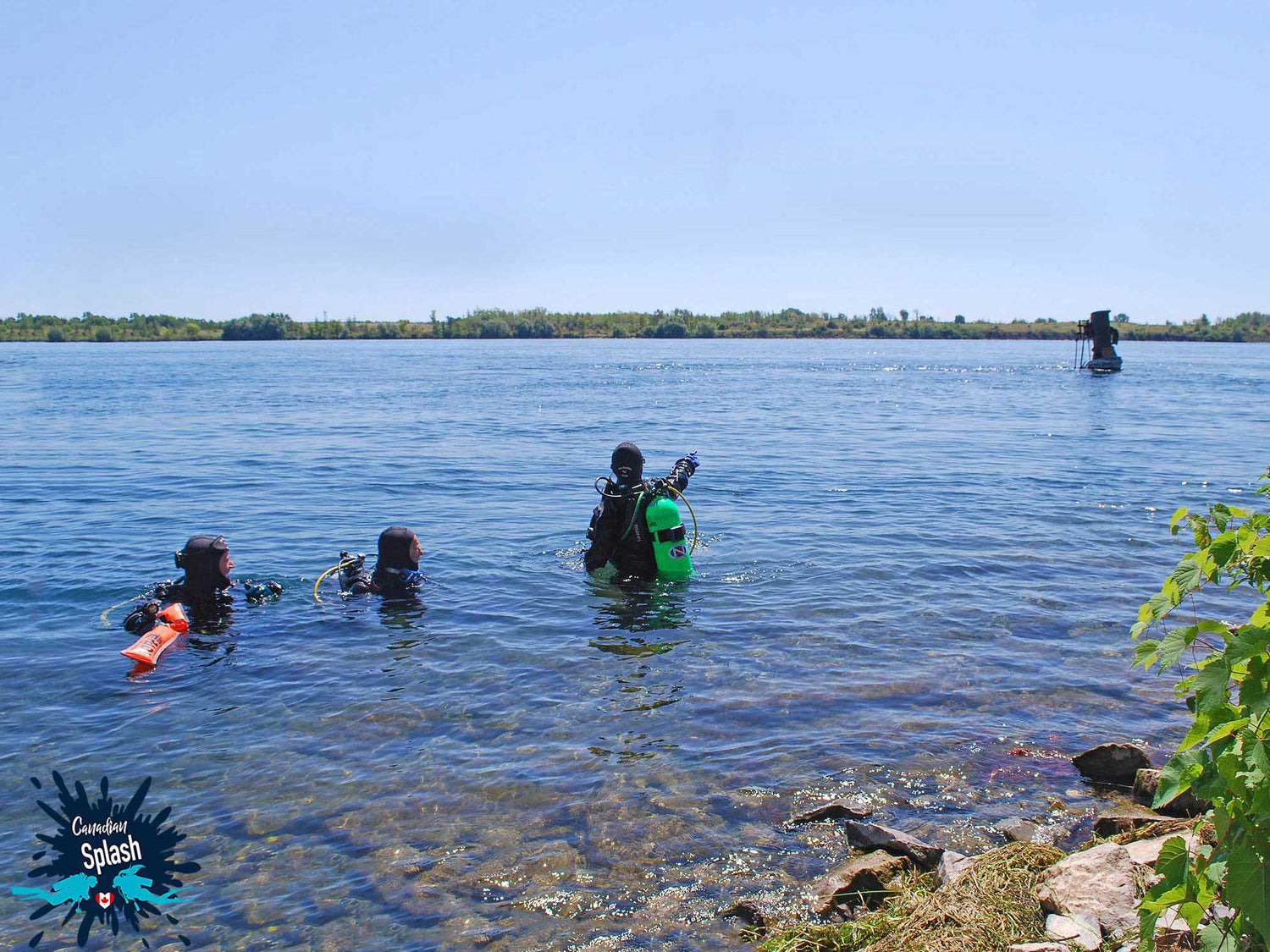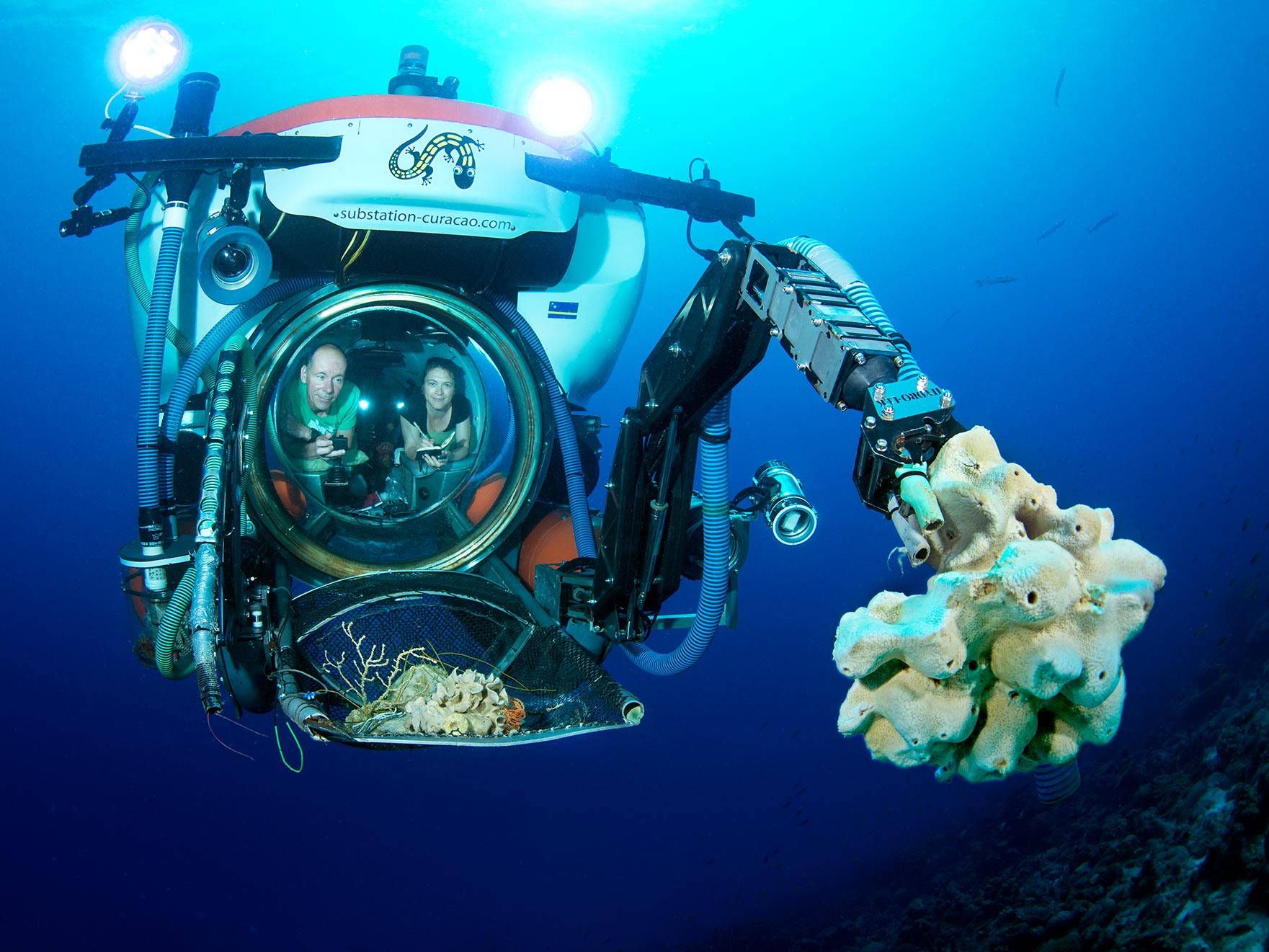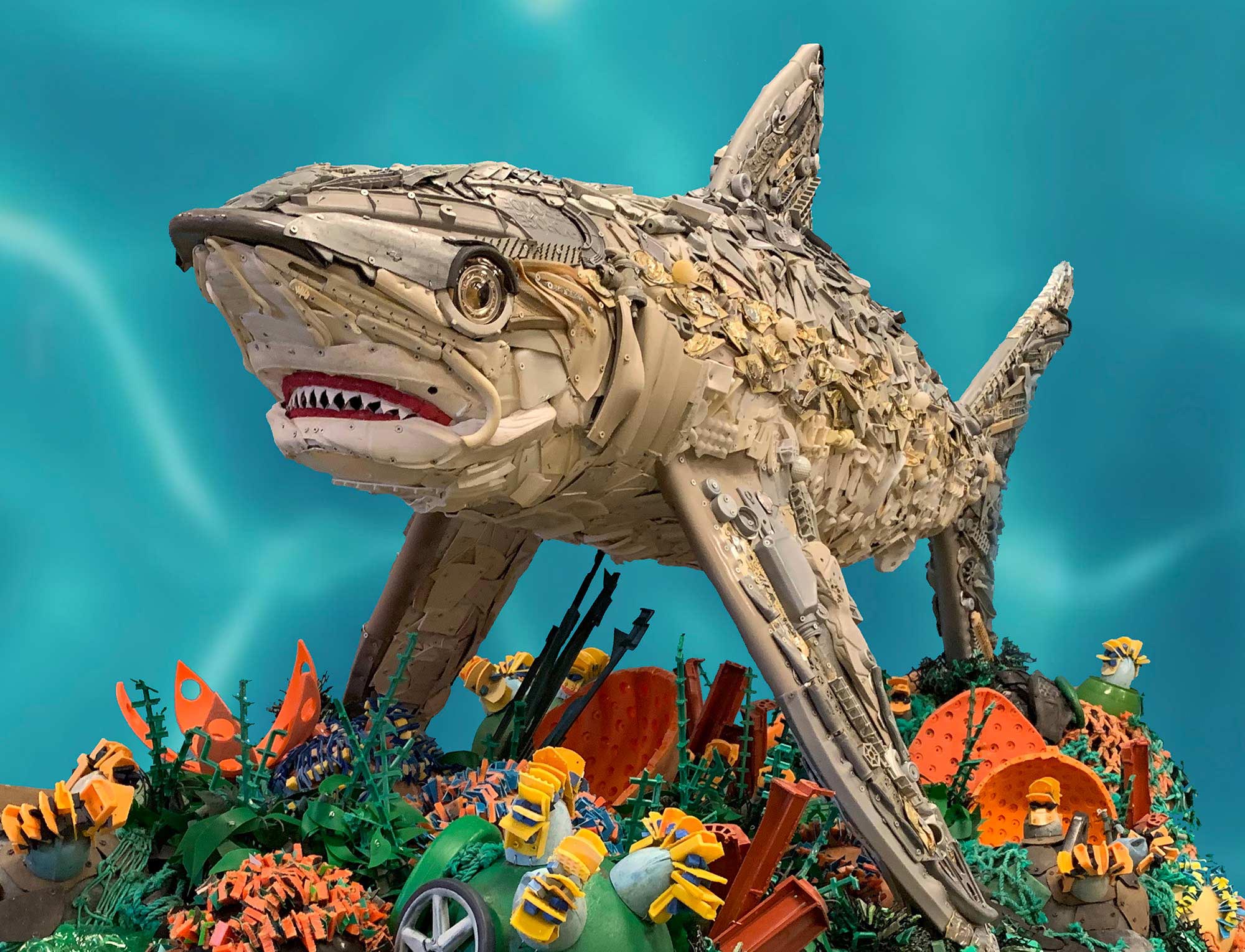By Ali Postma
First off, a confession. I love diving in Ontario. Why? For a couple of reasons.
Number one - Ontario, and more specifically Northern Ontario, is my home. No matter where in the world my husband Joey and I travel, or how many beautiful diving locations I visit, there’s truly no place like it. The second reason is the wide range of environments and things to see within them. Variety is the spice of life and in Ontario we have plenty of it.
Scuba Diving in Ontario
Ontario is the second largest province in Canada covering more than 1 million square kilometres (415,000 square miles). The province is home to four of the five Great lakes and thousands of smaller bodies of water scattered in between. In the past, Ontario’s lakes and rivers played a key role in the province's history, with early settlers and indigenous people using these as a means of transportation. Although the waterways are much quieter today, the remains of these notable moments rests beneath the surface, continuing to tell the story of Ontario’s not too distant past.
Being an Ontario scuba diver restricted in travel thanks to the current global health concerns, over the past year, Joey and I have taken the time to dive and discover many facets of this freshwater gem, as a part of our Canadian Splash project. Ontario’s inland wreck diving paired with its bountiful abundance of lake, river and wetland ecosystems are a place of unparalleled beauty. Together, our local excursions have brought us east, west, north and south diving into some of the province’s most unexpected places.

Ontario's lakes and waterways offer much in the way of beauty and history. © 2021 Ali Postma
The St-Lawrence Seaway
Starting at the outflow of Lake Ontario and running 3,058 kilometers (1,900 miles) through to the Atlantic ocean, the St-Lawrence River has been used for centuries as a primary shipping route bridging the Great Lakes to the sea. Over 200 million tons of cargo travel on the waterway on an annual basis - boiling down to roughly 15 cargo bearing ships per day.
The Brockville and the Thousand Island region of southern Ontario, is a dreamy place located on the doorstep to the nation's capital. It is also one of the province’s well-known scuba diving destinations. The stretch of river between Rockport and Brockville holds more than a dozen wrecks and drift diving sites, some of which can be accessed from shore.
During our visit to the Brockville, Joey and I indulged in a week's worth of boat and shore dives. The shore diving sites we visited include; the Conestoga, Rothesay, Wee Hawk, Lock 27 and Centeen Sculpture Park. We also chartered a dive boat to the less accessible sites of the Robert Gaskin and Lily Pearson through the Abucs scuba outfitter.
Of the visited dive sites, my favourite wrecks were the Gaskin and the Conestoga. The wooden barque of the Gaskin rested on a firm bottom of clay and silt at 18 meters (60 feet). Compared to the other wrecks, what was so appealing on the Gaskin was the intact hull and detailed wood railings appearing in great condition. Likewise, the Conestoga was a dive done bow to stern in the flowing shallows of Cardinal, approximately 20 minutes from Brockville. On this wreck, I loved drifting by this antique ship inspecting the winches and chains that adorn the body. There was also a healthy amount of fish that congregated at the Conestoga’s most photogenic feature; her 4-meter (14-foot) propeller.

The St-Lawrence River is an historically busy shipping route, making the area between Rockport and Brockville home to quite a number of wreck and drift diving sites. © 2021 Ali Postma
The Wrecks of Tobermory
There is a reason Tobermory is one of the best dive sites in Canada and arguably the world. From the clear blue fresh waters of Georgian Bay to several dozen shipwrecks spread across Fathom Five National Marine Park, Tobermory is a cold-water divers paradise.
With this Ontario location being a bucket list dive site for any cold-water scuba diver, Joey and I have visited the Bruce Peninsula on numerous occasions, our most recent trip being last fall in conjunction with Canadian Splash. Looking back at all our dives in this location, we have had the opportunity to dive; the Grotto, the Niagara II, the Arabia, the Scoville, Forest City, the Lighthouse, the Tugs and the Caroline Rose.
The Lighthouse and the Tugs are two of Tobermory’s dive sites accessible by shore. As the name implies, the Lighthouse is a dive done along a rocky wall at the base of Big Tub Lighthouse. The more popular Tugs dive site, comprises four small wrecks of which the Alice G is the largest and most intact.
The remainder of the aforementioned dive sites are only accessible via dive charter with the Niagara II being one of the most popular dives. It is also worth mentioning that all charters visit shipwreck dive sites found in 12 to 45 meters (40 to 150 feet) of water, save for the Grotto which is a wide open natural sea cave divers of all experience levels can safely enter.
After several years of diving in Tobermory, I would love to say that I have a favourite wreck, but I could no sooner choose a favourite star in the sky. For me, every visit to Tobermory has ignited a newfound appreciation for a different shipwreck and a longing to return - soon.

Tobermory is a Canadian treasure. With it's many shipwrecks, this cold-water site is a must-see for scuba divers. © 2021 Ali Postma
Ontario Parks
Ontario Parks is at the height of the province's nature scene, protecting some of the most beautiful expanses of lakes and forests in the country. This vast network protects over 9 million hectares, including areas of magnificent old-growth forest, woodland caribou ranges, wilderness rivers, wetlands and habitat for rare and endangered plants and animals.
As a Canadian girl born and raised in Northern Ontario, even though most of my childhood summers were spent in these Parks on the beach and in the forests, I gave little regard to what lurked below snorkeling distance. For Joey and I, our series of dives in partnership with Ontario Parks brought us to Samuel de Champlain, Finlayson Point, Marten River and Fairbank - all located in Northern Ontario.
Of the four parks we dove, the spring fed Fairbank lake stands out as the clearest body of water, boasting visibility of close to 9 meters (30 feet) and reaching a depth of 43 meters (141 feet). It also had a bustling population of crayfish that seemed to litter the benthos like leaves on a fall day. In contrast, Samuel de Champlain was a park nestled on a river with tea coloured water and very limited visibility. But where Samuel de Champlain fell short when compared to the water clarity of Fairbank, this park was actually one of the most historically intriguing dives. Located along the notable Voyageur trading route, diving Samuel, afforded us the discovery of an old logging artifact in the rustic shallows.

Don't miss out on the bounties of Ontario Parks. From Samuel de Champlain to Fairbank, each site has something unique to offer. © 2021 Ali Postma
Aquarium Diving
Ripley’s Aquarium of Canada is the largest indoor aquarium in Canada with an impressive collection of salt and freshwater fish from around the world. The facility first opened in 2013 and is located in the heart of downtown Toronto. Of the many fish exhibits the aquarium has on display, Dangerous Lagoon is easily one of the most anticipated displays, with sharks, turtles and rays circling the domed walkway above guest heads.
Part of their hands-on experience includes a 30-minute swim with the sharks in Dangerous Lagoon, for those trained in the art of scuba diving. What better way to experience some of nature’s most feared animals up close and personal. Obviously, being a unique dive opportunity in Ontario - Ripley’s was an opportunity I could hardly pass up.
Diving the aquarium’s shark tank is an experience Joey and I will be talking about for a long time. Having intimate animal interactions in such pristine and controlled settings is an incredibly special thing. Although animals in captivity is a very controversial subject, the positive impact these species ambassadors have in sparking conversations of education, conservation and a passion for the ocean is undeniable. While my husband and I may have had the chance to dive with sharks in the wild, to bring such a distinctive encounter to people thousands of kilometers away from the ocean is indeed a powerful thing.

Joey, pictured in Ripley's Aquarium. © 2021 Ali Postma
Wild Lake Superior
Lake Superior is the largest of North America’s Great Lakes and the most recent stop on our Canadian Splash dive excursion. This mammoth sized lake dubbed the “graveyard of the Great Lakes,” is the resting place of a large number of shipwrecks due to its wicked capacity of going from glassy water to raging tempest in the blink of an eye. As such it is a haven for scuba divers with it’s well preserved wrecks laying at icy depths.
Unfortunately for Joey and me, the unprecedented global health concerns made it so that we were unable to charter a boat while visiting Superior. Disappointing you might think... Yes, we were pretty bummed at missing the opportunity to sneak a peek at one or two of the lake's shipwrecks, but alas life had another adventure in mind. Instead, we explored Superior’s offerings from the shore via whitefish spawning and artifact diving.
Whitefish are found throughout much of Canada and parts of the northern United States, including all of the Great Lakes. They are a valuable commercial species preferring colder, deeper sections of lakes. By sheer happenstance, our arrival to Lake Superior coincided with the local whitefish spawning, where at night, mass amounts of this species move inshore to lay their eggs on shoals of rubble and gravel. Having never participated in something of this nature, I was flabbergasted at the amount of fish swarming the shallows. It was one of the most incredible lake experiences I have ever witnessed.
When Joey and I weren’t enjoying the memorable spawning dives, we also tried our hand at some artifact diving just outside of Sleeping Giant Provincial Park. Picking a day with limited wind, we dove a channel passage at the tip of the Sibley Peninsula where, across the way, a prolific silver mine used to exist dating back to the 1870’s. Dusting sand from the bottom we scavenged for sunken antiques known to be found in this particular channel, and were lucky enough to find broken clay pipes and pottery shards.

Ali and Joey stumble upon a whitefish spawning, an incredibly happy accident. © 2021 Ali Postma
A Newfound Appreciation for Diving in Ontario
When I first learned to dive in Ontario, it wasn’t for my particular love of dark and dismal lakes. It was simply because I love being underwater. Though I didn’t care much of my initial experience diving in this province, scuba diving here many years later has allowed me the opportunity to see my home through a different mindset. If Canadian Splash has taught me anything, it is to see the world through the eyes of a photographer. To seek out the small things, appreciate the big things and most of all cherish this freshwater world of fragile wonder.
Writers Note: A couple of these Ontario diving locations were featured in Scuba Diving Online September 2020, Explore July 2020 and DIVER Jan 2020 publications. Additionally some of these dives were sponsored by local vendors as a part of our Canadian Splash initiative.
 Brought together by their love for being in the water, Ali and Joey have been proudly sporting a neoprene wetsuit for the better part of a decade. Following their passion, Ali and Joey now live a life less ordinary – working, traveling and of course scuba diving. Through writing and photographing their dive adventures, they hope to help people fall in love with the underwater world, all while instilling knowledge and respect for the animals that live there.
Brought together by their love for being in the water, Ali and Joey have been proudly sporting a neoprene wetsuit for the better part of a decade. Following their passion, Ali and Joey now live a life less ordinary – working, traveling and of course scuba diving. Through writing and photographing their dive adventures, they hope to help people fall in love with the underwater world, all while instilling knowledge and respect for the animals that live there.
In their recent project - Canadian Splash - Ali and Joey will be traveling and diving all over Canada showcasing the beauty, wonder, and fragility hidden beneath the water in their home country.
Join Ali and Joey on Instagram, Facebook, Pinterest, and Twitter to dive Canada.
Underwater images were taken using a Canon EOS Rebel SL1 camera in 200DLM/C TTL Underwater Housing with dual DS161 strobes.
Additional Reading
Canadian Splash: Destination Newfoundland
Canadian Splash: Destination Nova Scotia
Canadian Splash: Destination New Brunswick
Chomping into the World of Children's Books
COVID-19 Check-In | Ambassadors, Part 2
Underwater Wreck Photography Settings and Technique
Transitioning to Canon Full Frame Mirrorless | Canon EOS R Underwater Photos













